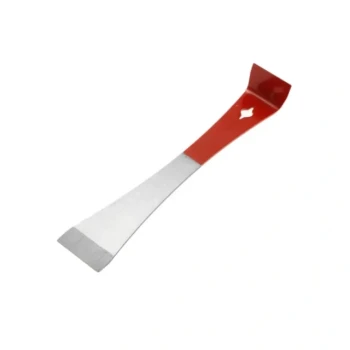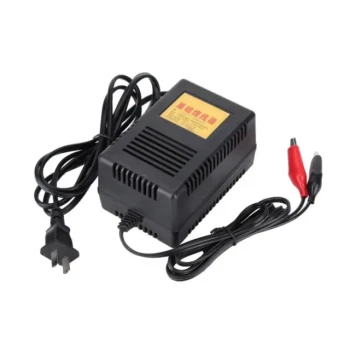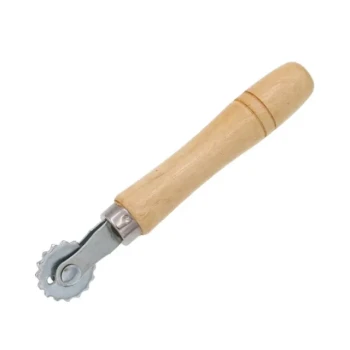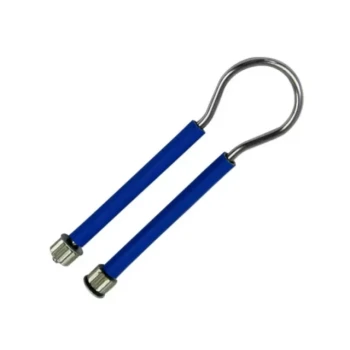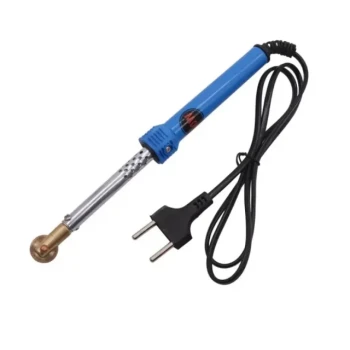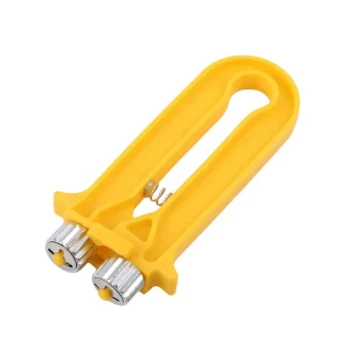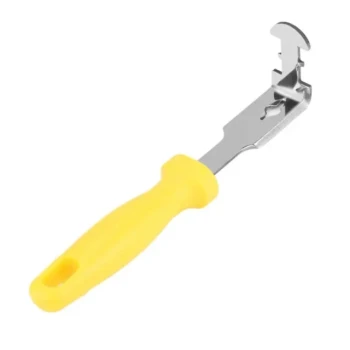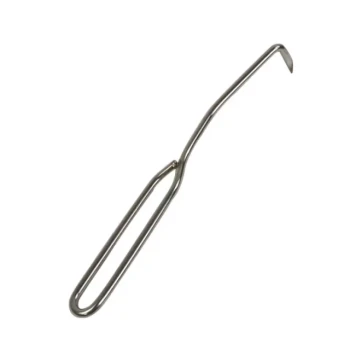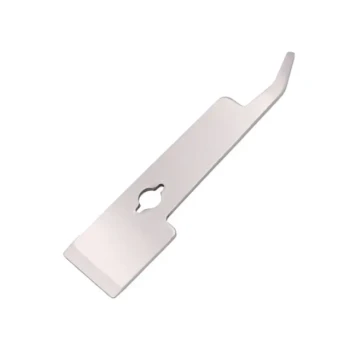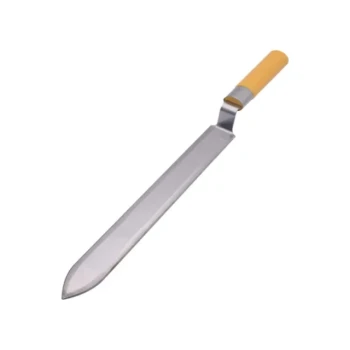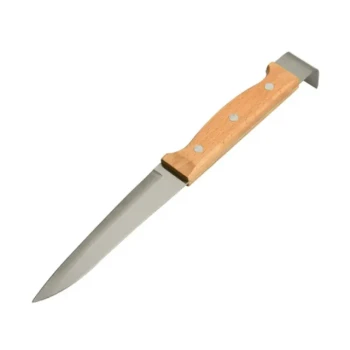In short, a standard beekeeping frame perch is designed to hold up to three frames. This tool attaches to the side of your hive body, giving you a secure place to hang frames temporarily. This frees up your hands and creates critical working space inside the hive during an inspection.
The core function of a frame perch isn't just to hold frames, but to create an organized, efficient, and safer workflow. Its three-frame capacity is a deliberate design choice that balances utility with the risk of overloading the device or exposing brood to the elements.
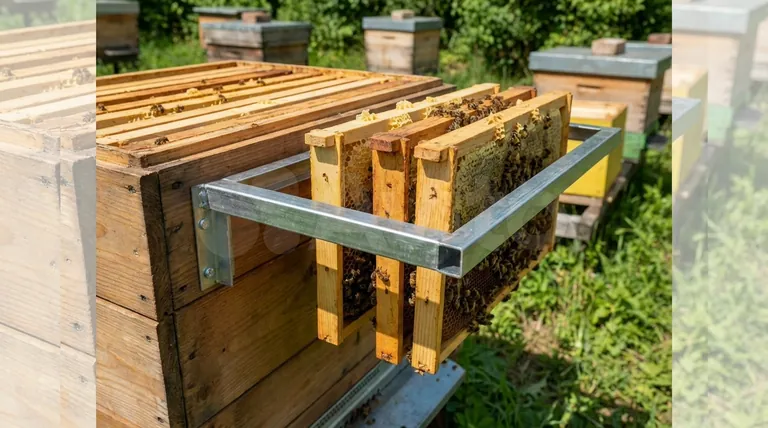
Why the Three-Frame Capacity is the Standard
A frame perch is a simple but indispensable tool for many beekeepers. Understanding why it's built to hold a specific number of frames reveals a great deal about the best practices for hive inspections.
The Purpose of a Perch
A frame perch solves a fundamental logistical problem. During an inspection, you need to remove frames to see what's happening deeper in the hive.
Without a perch, you're often forced to lean frames against the hive, set them on the ground, or awkwardly hold them. This can damage the comb, injure bees, and even harm the queen if she is on an outside frame.
The perch provides a stable, dedicated rack to hang these initial frames, keeping them safe and out of your way.
Creating Essential Workspace
The primary benefit of removing frames is to create space. By pulling one to three frames and hanging them on the perch, you gain the room needed to slide the remaining frames back and forth.
This maneuverability is crucial for locating the queen, checking brood patterns, and looking for signs of disease or pests without rolling or crushing bees between the frames.
Understanding the Trade-offs and Best Practices
While a frame perch is a valuable tool, its use requires an understanding of the potential risks and the proper inspection workflow.
Limit Time Outside the Hive
Frames, especially those containing uncapped brood (eggs and larvae), are sensitive to temperature changes and drying out.
The three-frame limit serves as a practical reminder not to keep frames outside the hive for an extended period. The goal is to inspect and return them efficiently.
Avoid Overloading
The perch is designed for the weight of three standard frames full of honey, brood, and bees. Attempting to hang more than its intended capacity risks damaging the perch or the hive body it's resting on.
More importantly, it could lead to the entire apparatus falling, which would damage your frames and severely disrupt the colony.
The Inspection Workflow
For the most effective inspection, you typically only need to remove the first one or two frames to begin.
Place these initial frames on the perch. This gives you the space to inspect the third frame, and once you're done, you can slide it over and continue your inspection one frame at a time. The perch simply holds the "buffer" frames that get the process started.
How to Apply This to Your Inspections
Choosing how many frames to place on your perch depends on your specific goal for that moment in the inspection.
- If your primary focus is a quick check or adding a feeder: You may only need to remove and hang one frame to create enough working space.
- If your primary focus is a full, deep inspection: Removing two or three frames to the perch will give you maximum maneuverability to thoroughly examine every frame in the box.
- If your primary focus is finding the queen: Start by hanging two frames to create a generous gap, which makes it much easier to inspect subsequent frames without rolling and potentially harming her.
Ultimately, the frame perch is a tool designed to make your beekeeping inspections calmer, safer for the bees, and more organized for you.
Summary Table:
| Frame Perch Capacity | Key Benefit | Key Consideration |
|---|---|---|
| Up to 3 Frames | Creates optimal workspace for inspecting the hive. | Avoid overloading to prevent damage and protect brood. |
| 1-2 Frames | Ideal for quick checks or focused tasks like finding the queen. | Minimizes time frames are exposed outside the hive. |
Streamline your apiary operations with professional-grade equipment from HONESTBEE.
As a trusted supplier of beekeeping supplies and equipment for commercial apiaries and distributors, we provide the durable, efficient tools you need for large-scale success. A well-designed frame perch is just one component of a productive workflow.
Let us help you equip your operation for maximum efficiency and bee health. Contact HONESTBEE today to discuss your wholesale needs and discover how our equipment can support your business.
Visual Guide
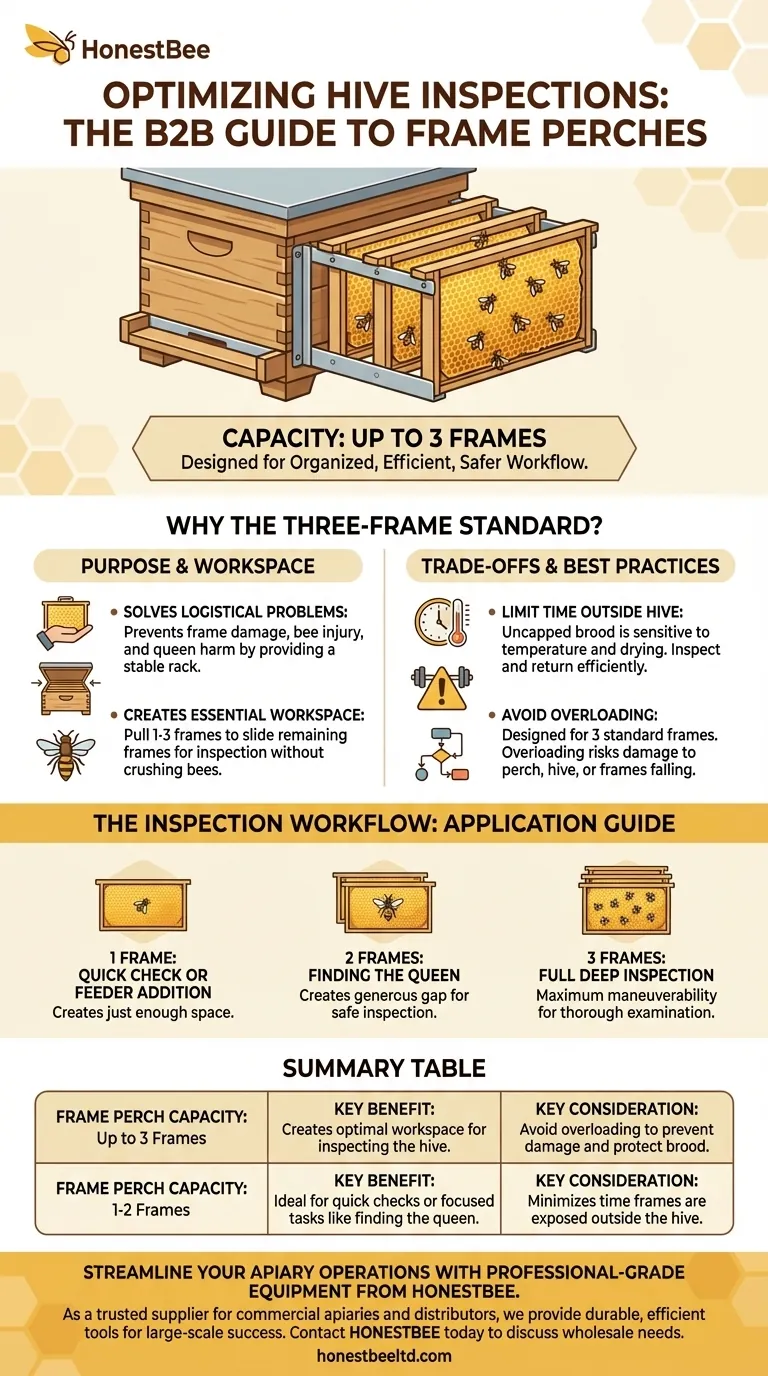
Related Products
- Professional Stainless Steel Pry-Bar Hive Tool
- Professional 3-Bar Frame Grip with Integrated Hive Tool
- Multi-Function Plier-Style Frame Grip Hive Tool
- HONESTBEE Professional Multi-Functional Hive Tool with Ergonomic Wood Handle
- Professional Dual-End Stainless Steel Hive Tool for Beekeeping
People Also Ask
- What are the features of a regular hive tool? The Essential Multi-Tool for Every Beekeeper
- Why is it recommended to have multiple hive tools on hand? Essential Tips for Efficient Beekeeping
- What safety precautions are advised for beekeeping with hive tools? Master Safe Handling for Calm, Efficient Hives
- What are the different types of hive tools available? Choose the Right Tool for Your Apiary
- What is the correct method for lifting frames with a hive tool? Master the Technique for a Calm Hive





